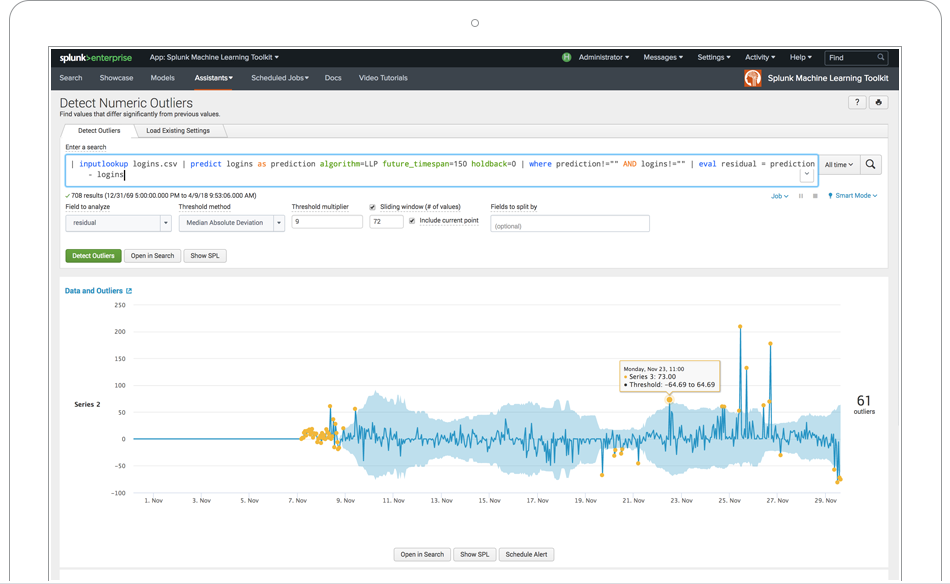Why do you need Splunk? IoT and industrial data

Today we want to talk about the Internet of Things (IoT) and the Industrial Internet of Things (IIoT), as well as how Splunk is associated with this.
First, let's deal with the basic terms:
Internet of Things (IoT, Internet of Things) - a system of integrated computer networks and connected physical objects (things) with embedded sensors and software for data collection and exchange, with the possibility of remote control and management in an automated mode, without human intervention.
')
Industrial Internet of Things (Industrial Internet of Things, IIoT) - the Internet of things for corporate / industry use - differs from the usual IoT in that industrial (production) facilities with built-in sensors are connected.
All these objects generate a huge amount of structured and unstructured data. By processing this data, information can be obtained that can be used to prevent equipment breakdowns, unplanned downtime, reduce unscheduled maintenance and supply chain management failures , thereby allowing the enterprise to function more efficiently.
Now worldwide, industrial production is increasingly turning to its IIoT data in order to better monitor and diagnose equipment operation problems, as well as predict maintenance needs.
According to ARC Industry research, the global manufacturing industry annually loses $ 20 billion from unplanned downtime , and almost 80% of industrial operations are reactive . The lack of real-time awareness of what is happening in critical industrial systems causes a reactive approach to managing industrial operations, and problems that arise are often solved by intuition, rather than using a data-based approach.
In this situation, the correct presentation of relevant and timely information in a form understandable to the user acquires special significance.
Splunk for IoT
Splunk software allows you to collect, analyze and visualize data in real time, as well as compare historical data from any source, including data generated by various sensors, sensors, SCADA systems, networks and applications related to industrial production.
Splunk main features:
Let's take a look at the main features of Splunk for working with industrial data:
Monitoring and Diagnostics

- Continuous monitoring and data collection in real time
- Combining and comparing data from various sources: sensors, infrastructure, applications
- Receiving and processing not only unstructured data, but also integration with classical databases
- The ability to easily create new KPIs and alerts
- The ability to get in one place indicators related to the performance of industrial equipment, and business indicators. It provides a wide context for decision making on various issues.

Security and Compliance

- Rapid risk perception through comprehensive real-time transparency to track the performance of important assets
- Perform quick investigations with special searches and dynamic visual correlations that identify anomalous actions.
- Reduced production downtime by reducing the number of system failures
Predictive service

- Predicted downtime prediction of critical production sites using machine learning
- Monitoring equipment performance and reducing overloads by analyzing the achievement of threshold values, alarms, indicators and various trends
Currently, there are more than 100 IoT applications and add-ons for loading data from various sensors, sensors, and equipment into Splunk. They can be found on the SplunkBase website in the Internet of Thing section.
Splunk Industrial Asset Intelligence

In the spring of 2018, Splunk announced the launch of its first platform, Splunk Industrial Asset Intelligence (IAI) , directly related to IIoT, designed for process automation engineers in industrial companies.
This solution is intended for companies in the fields of production, energy, transport, oil and gas, as well as other industrial sectors.
Splunk IAI correlates data from automated control systems (ACS), sensors, SCADA systems and applications, making it easy to monitor and diagnose equipment performance and problems in real time.
From June 23 Splunk IAI is available with limited availability, and a full release is scheduled for autumn 2018 .
The official brief for this solution can be found here .
If you have not tried Splunk yet, then it's time to start, the free version up to 500MB per day is available to everyone. And if you have questions or problems with Splunk - you can ask them to us , and we will help.
We are the official Premier Splunk Partner .

Source: https://habr.com/ru/post/420021/
All Articles